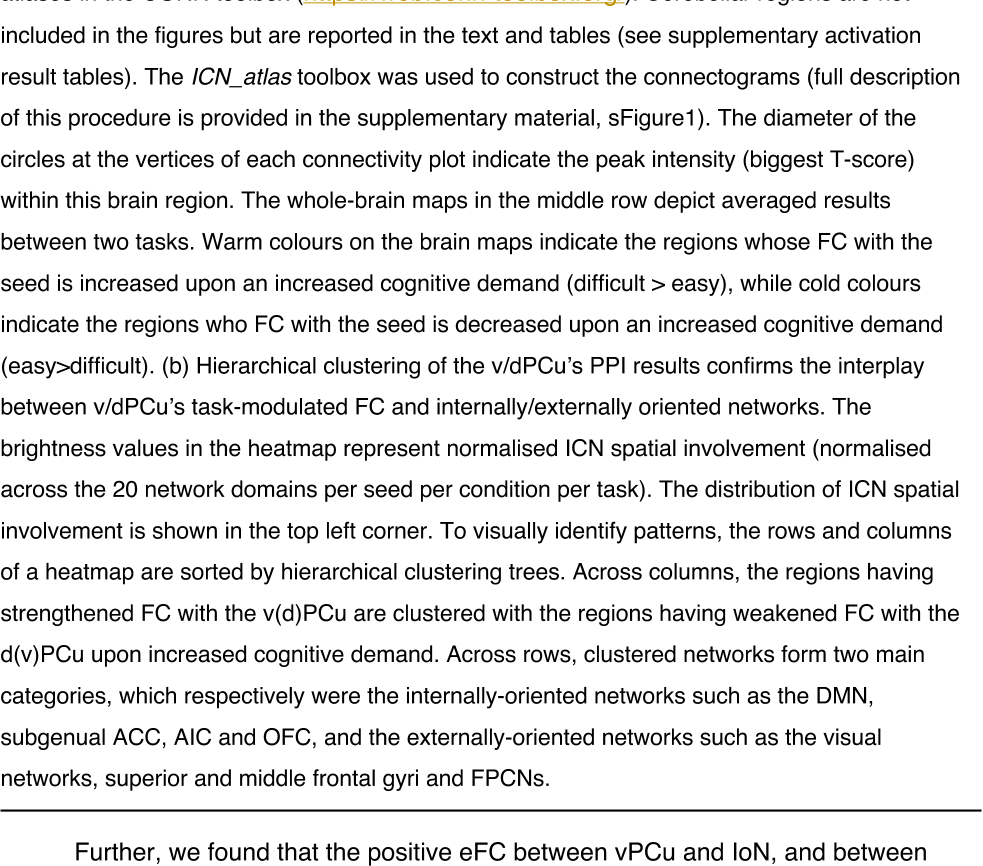




Did you find this useful? Give us your feedback














4 citations
1 citations
1,480 citations
..., 2005) and contraposed in their cognitive function (Weissman et al., 2006)....
[...]
...A case in point is the interaction between the default mode network (DMN) and cognitive control networks which have been reported to be anti-correlated (Fox et al., 2005) and contraposed in their cognitive function (Weissman et al., 2006)....
[...]
1,432 citations
...It is engaged in a broad range of cognitive tasks, including both internal representation and externally-oriented, goal-directed tasks (Cavanna & Trimble, 2006; Fletcher et al., 1995) and its activity/connectivity can discriminate between conscious/unconscious states (Utevsky et al....
[...]
...It is engaged in a broad range of cognitive tasks, including both internal representation and externally-oriented, goal-directed tasks (Cavanna & Trimble, 2006; Fletcher et al., 1995) and its activity/connectivity can discriminate between conscious/unconscious states (Utevsky et al., 2014)....
[...]
1,370 citations
...We used the Matlab-based “ICN_Atlas” toolbox to determine each significant cluster’s region/ICN correspondence by rating their spatial overlaps with the pre-defined regions/ICNs (Cole et al., 2014, 2016; Ito et al., 2017; Kozák et al., 2017; Laird et al., 2011, 2013; Smith et al., 2009)....
[...]
...Each ICN’s relevance to cognitive function has been established from activation studies, from which we can infer what information features are encoded in different networks (Cole et al., 2014)....
[...]
1,353 citations
...Model evidence is the probability of obtaining the observed data given a particular model (Klaas Enno Stephan et al., 2009)....
[...]
1,346 citations
...The DMN has been postulated to be at the highest level of information processing in the brain (Margulies et al., 2016) and has the highest number of optimal inter-network connections in the brain (Pappas et al....
[...]
...The DMN has been postulated to be at the highest level of information processing in the brain (Margulies et al., 2016) and has the highest number of optimal inter-network connections in the brain (Pappas et al., 2020), along with our findings presented here, we propose that this topological…...
[...]